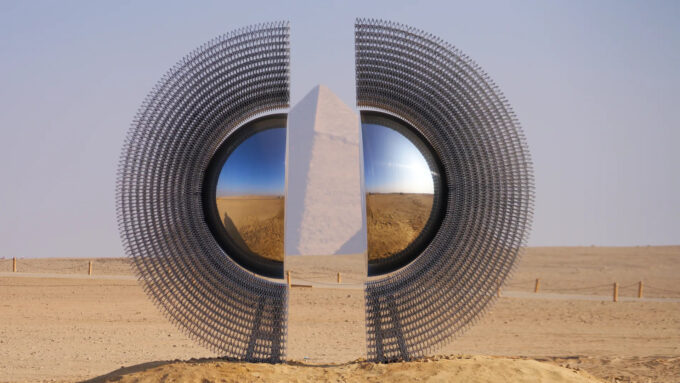- Home
- Articles
- Architectural Portfolio
- Architectral Presentation
- Inspirational Stories
- Architecture News
- Visualization
- BIM Industry
- Facade Design
- Parametric Design
- Career
- Landscape Architecture
- Construction
- Artificial Intelligence
- Sketching
- Design Softwares
- Diagrams
- Writing
- Architectural Tips
- Sustainability
- Courses
- Concept
- Technology
- History & Heritage
- Future of Architecture
- Guides & How-To
- Projects
- Interior Design
- Competitions
- Jobs
- Store
- Tools
- More
- Home
- Articles
- Architectural Portfolio
- Architectral Presentation
- Inspirational Stories
- Architecture News
- Visualization
- BIM Industry
- Facade Design
- Parametric Design
- Career
- Landscape Architecture
- Construction
- Artificial Intelligence
- Sketching
- Design Softwares
- Diagrams
- Writing
- Architectural Tips
- Sustainability
- Courses
- Concept
- Technology
- History & Heritage
- Future of Architecture
- Guides & How-To
- Projects
- Interior Design
- Competitions
- Jobs
- Store
- Tools
- More
Form Meets Function: How Architectural Design Impacts Real Estate Buying

The intersection of architecture and real estate is a compelling arena where aesthetics and practicality converge. When prospective buyers explore the market, they often seek properties that encapsulate their style while meeting functional requirements.
A home’s architectural design can drastically impact its desirability and value, influencing what attracts potential buyers. Understanding this relationship allows both buyers and sellers in real estate to approach property transactions with insight. More than just curb appeal, architectural elements convey a story about space and affect perceptions and decisions. A property’s design must resonate with what modern buyers are looking for.
Table of Contents
ToggleThe Role of Aesthetic Appeal
Aesthetic appeal is one of the most significant factors in real estate buying. Homes that combine striking features with thoughtful layouts tend to attract more attention. Architectural styles like contemporary, farmhouse, or mid-century modern evoke specific emotions and resonate differently with various buyers.
A well-thought-out design can create a lasting first impression, making it easier for potential buyers to envision their lives within the space. Look into listings like those on Greatest Moves that encapsulate both aesthetics and functionality. The visual elements can transport potential buyers emotionally and make them feel more connected to a property.

Layout and Flow: Functional Considerations
The layout of a property influences its livability and functionality. Open floor plans have gained popularity for their ability to create seamless transitions between living areas, fostering social interactions among family members. Conversely, traditional compartmentalized layouts offer privacy and can be appealing to buyers seeking quieter spaces within their homes.
The flow of a house, from the entryway to common areas and private rooms, plays a critical role in how a potential buyer interacts with the property. A well-designed layout makes navigation intuitive and can enhance the overall experience of living there. Flexibility in design allows homeowners to adapt spaces to their lifestyles over time.
Sustainability in Architectural Design
More and more buyers today are conscious of their environmental footprints, seeking homes that utilize sustainable materials and energy-efficient technologies. Features such as solar panels, high-efficiency heating and cooling systems, and sustainably sourced building materials reflect a commitment to eco-friendliness.
Not only do these design elements reduce utility costs, but they also appeal to buyers concerned about climate change and resource conservation. Various studies have shown that green homes can command higher sale prices, further demonstrating the value of sustainable architecture. By implementing environmentally conscious designs, developers greatly enhance a property’s marketability and attract a specific buyer demographic eager for sustainable living solutions.
Cultural Influences on Architecture
Architectural design is deeply influenced by the cultural context of a location. Different societies prioritize diverse features based on their historical experiences and environmental factors. Coastal areas may emphasize designs that withstand tropical storms, whereas homes in urban settings might focus on maximizing small spaces. This diversity provides buyers with a wide array of options, allowing them to choose homes that reflect their cultural identities and personal preferences.
Properties that incorporate local architectural styles can foster a sense of community and belonging among residents. Recognizing the importance of cultural influences aids in designing appealing homes and allows sellers to market properties effectively to targeted buyer demographics.
The Emotional Impact of Architectural Features
Emotional responses toward architectural features can be quite significant in the home-buying process. Specific styles and elements, such as large windows that invite natural light or cozy nooks for gathering, evoke feelings of warmth and connection. Buyers often are searching for a space that feels inviting and aligns with their emotional needs. Know that homes equipped with features that promote comfort and relaxation will generally attract interest. Individual preferences can vary greatly, influencing a buyer’s emotional attachment to a property.

Developers focusing on creating intimate spaces can leave a lasting impression on buyers and affect market outcomes. Crafting homes that resonate emotionally can translate directly into sales success.
Market Trends and Architectural Innovations
The real estate market is continually evolving, with architectural innovations reflecting current trends and buyer preferences. As remote work becomes more prevalent, homes that incorporate dedicated office spaces and multifunctional designs are growing in demand. Buyers look for properties that allow for work-life balance and comfortable living environments.
Technology integration is an essential consideration, with smart homes now seen as desirable assets. These advancements enhance the quality of life for residents and appeal to a tech-savvy demographic eager for innovation in their living spaces. Understanding market trends allows architects and developers to craft spaces that are not just stylish but resonate with current and future needs.
Architectural design has a profound impact on the real estate market, shaping buyer perceptions and preferences. From aesthetic appeal to functional layouts and sustainability, understanding the nuances of design can influence real estate transactions.
The integration of cultural influences and emotional considerations further enhances the connection between buyers and properties. By keeping current with trends and innovations, developers can create spaces that meet tomorrow’s needs so that their homes remain competitive in the real estate market.
illustrarch is your daily dose of architecture. Leading community designed for all lovers of illustration and #drawing.
Submit your architectural projects
Follow these steps for submission your project. Submission FormLatest Posts
Unlocking Value: How Thoughtful Architecture Elevates the Real Estate Experience
In today’s evolving built environment, architecture is more than shelter or decoration....
Simplifying Property Transactions: Your Quick Sale Option
Regardless of the reasons behind selling a property, the process can sometimes...
When Fast Decisions Cost Big: What Real Estate Teaches About Timing
In real estate, impulse moves aren’t just costly—they’re dangerous. Today, success isn’t...
Making Sure Your Rental Agreement is Fair and Clear
No matter which side of the contract you’re on, you must ensure...












Leave a comment